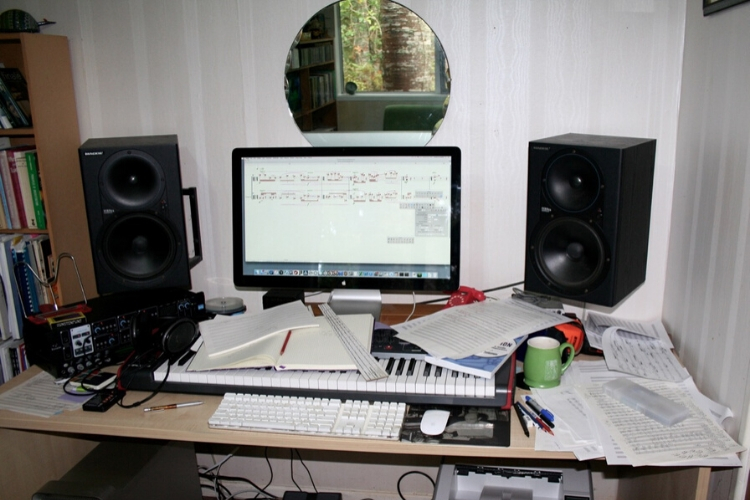In our Composer Spaces series, we ask composers to share a bit about their working environment and to give us a brief insight into their process. This week we present composer, James Gardner.
What does a typical composing day look like for you?
There are no "typical" composing days! In the early stages, the "routine" is very much freeform but usually becomes more strict and unrelenting as a deadline breathes down my neck.
Please describe the space where you compose your music.
Like most composers, I suspect, I compose my music on and off all the time wherever I happen to be. The room where things are assembled into their final form is nothing special in itself, but we are lucky to live in a house in Titirangi which has views of native trees from every window.
What equipment (including software) do you have in your space?
I've been using Finale since 1993 and have stuck with it, despite its...idiosyncrasies. I have dipped into Dorico recently, so we'll see what happens there. A lot of work goes on before reaching notation software, of course – just pencil on to manuscript paper or squared paper. The tactile and immediate aspect of such a low tech way of working has its advantages. That said, I also sometimes use Logic to try things out. And there are a couple of other bits of technology that I use regularly. One is the String-o-Graph, which is a set of life-size fingerboard diagrams for violin, viola and cello, which I've stuck on to bits of cardboard and hardboard. Mark Menzies alerted me to that about 20 years ago, and I haven't looked back. The other is the set of Excel spreadsheets that my brother-in-law Nigel Keam made. These automate various interval generation and looping procedures and weighted randomisations that I used to do very laboriously with pencil and squared paper.
Please describe your typical composing process. Does it change with each piece?
It very much changes with each piece. I tend to work top-down and bottom-up simultaneously. I also tend to start by considering the specific nature of the instruments that I'm writing for, and this determines certain ways of proceeding. I also bear in mind the particular players I might be writing for – a bit like a playwright writing a role that might suit a particular actor.
What are you currently working on in your space?
I'm currently working on a piece for percussion and double-belled bass trombone for the Melbourne-based Ossicle duo. We had a very productive development session a month ago, so I'm working through the recordings I made and the notes I took of that session to shape the piece. The piece before that was 'Gyre', a concerto for the Los Angeles Percussion Quartet and the Christchurch Symphony Orchestra.
 Chaos, with mirrored forest...
Chaos, with mirrored forest...
SOUNZ blog is designed for expressive discussion and debate amongst the arts and broader community. This is intended to be a safe space so please remember to keep comments respectful and avoid personal attacks, criticisms of specific organisations and defamatory language. Comments are moderated to ensure that they comply with SOUNZ’s Community guidelines.
